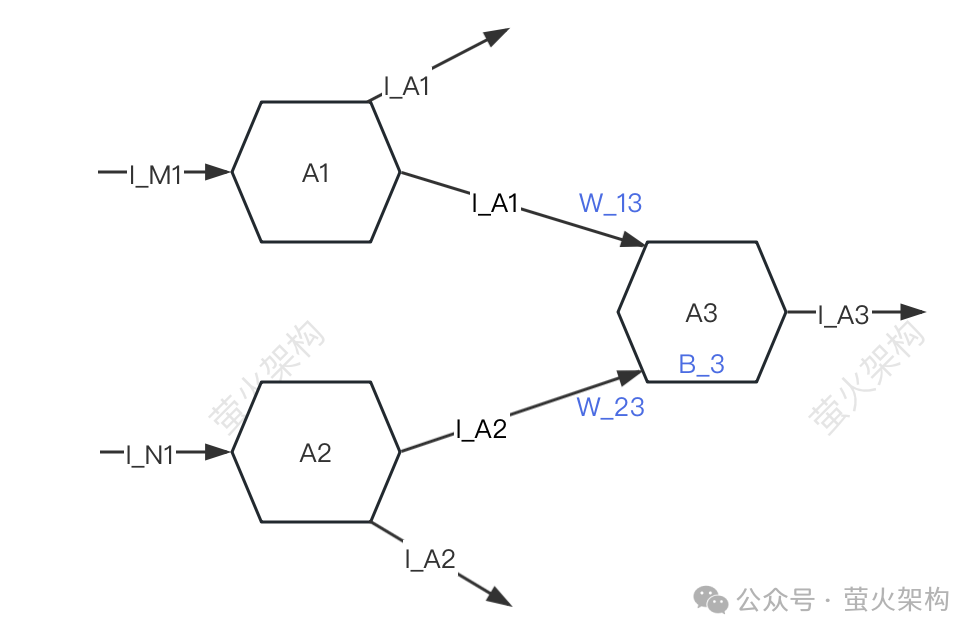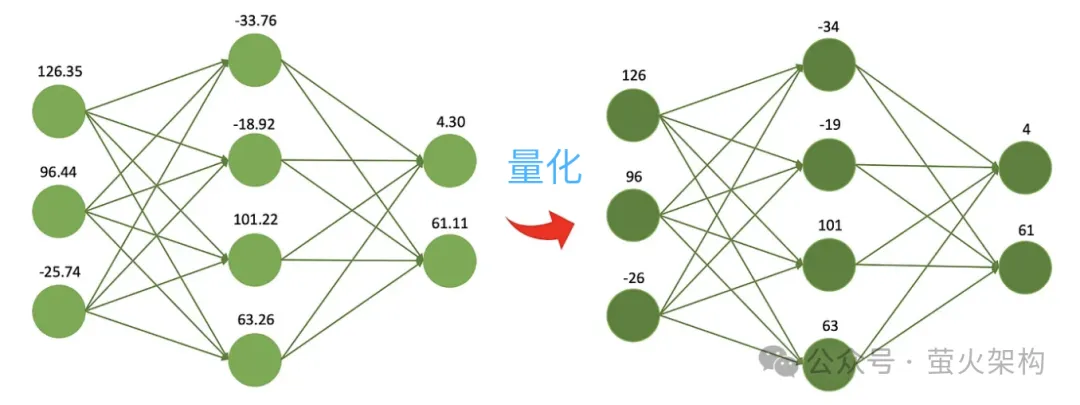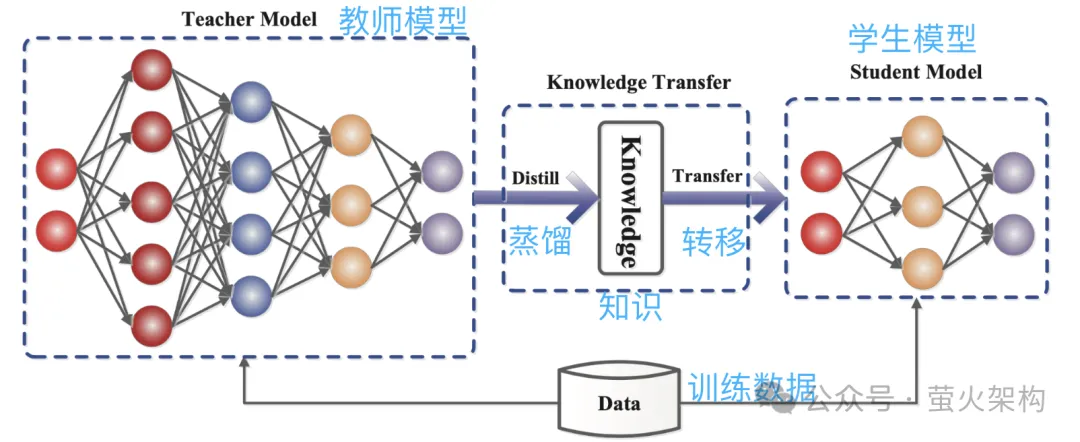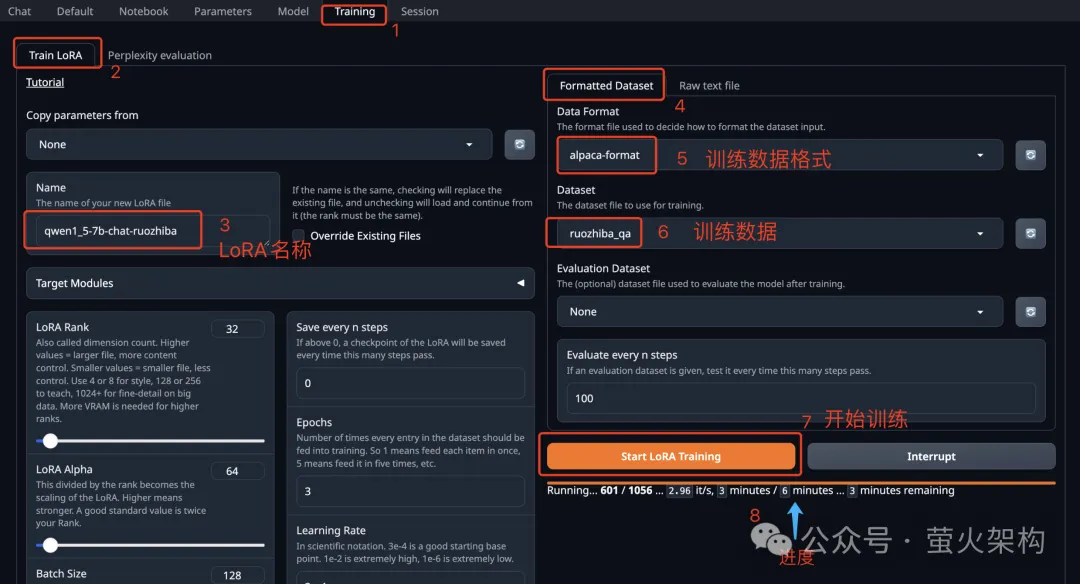 Technology peripherals
Technology peripherals
 AI
AI
 Quantification, pruning, distillation, what exactly do these big model slangs say?
Quantification, pruning, distillation, what exactly do these big model slangs say?
Quantification, pruning, distillation, what exactly do these big model slangs say?
Quantification, pruning, distillation, if you often pay attention to large language models, you will definitely see these words. Just look at these words, it is difficult for us to look at these words alone. Understand what they do, but these words are particularly important for the development of large language models at this stage. This article will help you get to know them and understand their principles.
Model Compression
Quantification, pruning, and distillation are actually general neural network model compression technologies, not exclusive to large language models .
The significance of model compression
After compression, the model file will become smaller, and the hard disk space it uses will also become smaller, and it will be loaded into the memory. Or the cache space used during display will also become smaller, and the running speed of the model may also be improved.
Through compression, using the model will consume less computing resources, which can greatly expand the application scenarios of the model, especially where model size and computational efficiency are of greater concern, such as Mobile phones, embedded devices, etc.
What is compressed?
What is compressed is the parameters of the model. What are the parameters of the model?
You may have heard that current machine learning uses neural network models. The neural network model simulates the neural network in the human brain.
Here I drew a simple schematic diagram for everyone to take a look at.
 Picture
Picture
For simplicity, only three neurons are described: A1, A2, and A3. Each neuron receives signals from other neurons and transmits signals to other neurons.
A3 will receive the signals I_A1 and I_A2 from A1 and A2, but the intensity of the signals received by A3 from A1 and A2 is different (this intensity is called "weight"), assuming The strengths here are W_13 and W_23 respectively, and A3 will process the received signal data.
- First perform a weighted sum of the signals, that is, I_A1*W_13 I_A2*W_23,
- Then add A3 itself A parameter B_3 (called "bias"),
- Finally convert this data sum into a specific form, and send the converted signal to the next neuron .
In the process of processing this signal data, the weights (W_13, W_23) and bias (B_3) used are the parameters of the model. Of course, the model has other parameters. Parameters, but weights and biases are generally the bulk of all parameters. If divided by the 80/20 principle, they should both be above 80%.
When using a large language model to generate text, these parameters have been pre-trained and we cannot modify them. It is like the coefficients of polynomials in mathematics. We can only Pass in the unknown xyz and get an output result.
Model compression is to compress these parameters of the model. The first thing to consider is the weight and bias. The specific methods used are quantization, pruning and distillation, which are the focus of this article. .
Quantization
Quantization is to reduce the numerical accuracy of model parameters. For example, the initially trained weights are 32-bit floating point numbers, but in actual It is found that there is almost no loss in using 16-bit representation, but the model file size is reduced by half, the video memory usage is reduced by half, and the communication bandwidth requirements between the processor and memory are also reduced, which means lower costs and higher income.
It's like following a recipe, you need to determine the weight of each ingredient. You can use a very accurate electronic scale that is accurate to 0.01 grams, which is great because you can know the weight of each ingredient very accurately. However, if you are just making a potluck meal and don't actually need such high accuracy, you can use a simple and cheap scale with a minimum scale of 1 gram, which is not as accurate but is enough to make a delicious meal. dinner.
 Picture
Picture
Another advantage of quantification is that it can be calculated faster. Modern processors usually contain a lot of low-precision vector calculation units. The model can make full use of these hardware features to perform more parallel operations; at the same time, low-precision operations are usually faster than high-precision operations, and the consumption of a single multiplication and addition is time is shorter. These benefits also allow the model to run on lower-configuration machines, such as ordinary office or home computers, mobile phones and other mobile terminals without high-performance GPUs.
Along this line of thinking, people continue to compress 8-bit, 4-bit, and 2-bit models, which are smaller in size and use less computing resources. However, as the accuracy of the weights decreases, the values of different weights will become closer or even equal, which will reduce the accuracy and precision of the model output, and the performance of the model will decline to varying degrees.
Quantization technology has many different strategies and technical details, such as dynamic quantization, static quantization, symmetric quantization, asymmetric quantization, etc. For large language models, static quantization strategies are usually used. , after the model training is completed, we quantize the parameters once, and the model no longer needs to perform quantitative calculations when running, so that it can be easily distributed and deployed.
Pruning
Pruning is to remove unimportant or rarely used weights in the model. The values of these weights are generally Close to 0. For some models, pruning can produce a higher compression ratio, making the model more compact and efficient. This is particularly useful for deploying models on resource-constrained devices or when memory and storage are limited.
Pruning also enhances the interpretability of the model. By removing unnecessary components, pruning makes the underlying structure of the model more transparent and easier to analyze. This is important for understanding the decision-making process of complex models such as neural networks.
Pruning involves not only pruning weight parameters, but also pruning certain neuron nodes, as shown in the following figure:
 Picture
Picture
Note that pruning is not suitable for all models. For some sparse models (most parameters are 0 or close to 0), pruning may have no effect; for some parameters For relatively few small models, pruning may lead to a significant decrease in model performance; for some high-precision tasks or applications, it is not suitable to prune the model, such as medical diagnosis, which is a matter of life and death.
When actually applying pruning technology, it is usually necessary to comprehensively consider the improvement of model running speed and the negative impact of pruning on model performance, and adopt some strategies, such as giving each element in the model Score a parameter, that is, evaluate the contribution of the parameter to the model performance. Those with high scores are important parameters that must not be cut off; those with low scores are parameters that may not be so important and can be considered for cutting. This score can be calculated through various methods, such as looking at the size of the parameter (the larger absolute value is usually more important), or determined through some more complex statistical analysis methods.
Distillation
Distillation is to directly copy the probability distribution learned by the large model into a small model. The copied model is called the teacher model, which is generally an excellent model with a large number of parameters and strong performance. The new model is called a student model, which is generally a small model with relatively few parameters.
During distillation, the teacher model will generate multiple probability distributions of possible outputs based on the input, and then the student model will learn the probability distribution of this input and output. After extensive training, the student model can imitate the behavior of the teacher model, or learn the knowledge of the teacher model.
For example, in an image classification task, given a picture, the teacher model may output a probability distribution similar to the following:
- Cat: 0.7
- Dog: 0.4
- Car: 0.1
Then Submit this picture and the output probability distribution information to the student model for imitation learning.
 Picture
Picture
Because distillation compresses the knowledge of the teacher model into a smaller and simpler student model, the new The model may lose some information; in addition, the student model may rely too much on the teacher model, resulting in poor generalization ability of the model.
In order to make the learning effect of the student model better, we can use some methods and strategies.
Introducing the temperature parameter: Suppose there is a teacher who teaches very fast and the information density is very high, it may be a little difficult for students to keep up. At this time, if the teacher slows down and simplifies the information, it will be easier for the students to understand. In model distillation, the temperature parameter plays a role similar to "adjusting the lecture speed" to help the student model (small model) better understand and learn the knowledge of the teacher model (large model). Professionally speaking, it is to make the model output a smoother probability distribution, making it easier for the student model to capture and learn the output details of the teacher model.
Adjust the structure of the teacher model and the student model: It may be difficult for a student to learn something from an expert because the knowledge gap between them is too large to learn directly You may not understand. At this time, you can add a teacher in the middle, who can not only understand the words of experts, but also convert them into language that students can understand. The teacher added in the middle may be some intermediate layers or auxiliary neural networks, or the teacher can make some adjustments to the student model so that it can better match the output of the teacher model.
We have introduced three main model compression technologies above. In fact, there are still a lot of details here, but it is almost enough to understand the principles. There are also other model compression technologies. , such as low-rank decomposition, parameter sharing, sparse connection, etc. Interested students can check more related content.
In addition, after the model is compressed, its performance may decline significantly. At this time, we can make some fine-tuning of the model, especially for tasks that require higher model accuracy, such as In medical diagnosis, financial risk control, autonomous driving, etc., fine-tuning can restore the performance of the model to a certain extent and stabilize its accuracy and precision in certain aspects.
Talking about model fine-tuning, I recently shared an image of Text Generation WebUI on AutoDL. Text Generation WebUI is a Web program written using Gradio, which can easily adjust large language models. Perform inference and fine-tuning, and support multiple types of large language models, including Transformers, llama.cpp (GGUF), GPTQ, AWQ, EXL2 and other models in various formats. In the latest image, I have built-in Meta’s recently open source Llama3 large model, interested students can try it out. For how to use it, see: Learn to fine-tune a large language model in ten minutes
 Picture
Picture
Reference article:
##https://www.php.cn/link/d7852cd2408d9d3205dc75b59a6ce22e
https://www.php.cn/link/f204aab71691a8e18c3f6f00872db63b
https://www.php.cn/link/ b31f0c758bb498b5d56b5fea80f313a7
##https://www.php.cn/link/129ccfc1c1a82b0b23d4473a72373a0a
The above is the detailed content of Quantification, pruning, distillation, what exactly do these big model slangs say?. For more information, please follow other related articles on the PHP Chinese website!

Hot AI Tools

Undresser.AI Undress
AI-powered app for creating realistic nude photos

AI Clothes Remover
Online AI tool for removing clothes from photos.

Undress AI Tool
Undress images for free

Clothoff.io
AI clothes remover

AI Hentai Generator
Generate AI Hentai for free.

Hot Article

Hot Tools

Notepad++7.3.1
Easy-to-use and free code editor

SublimeText3 Chinese version
Chinese version, very easy to use

Zend Studio 13.0.1
Powerful PHP integrated development environment

Dreamweaver CS6
Visual web development tools

SublimeText3 Mac version
God-level code editing software (SublimeText3)

Hot Topics
 1378
1378
 52
52
 How to maintain the original image quality of Meitu Xiu Xiu
Apr 09, 2024 am 08:34 AM
How to maintain the original image quality of Meitu Xiu Xiu
Apr 09, 2024 am 08:34 AM
Many friends use Meituan Xiuxiu software to P-picture, but how to maintain the original quality of the picture when saving it after P-picture? The operation method is brought to you below. Friends who are interested can take a look with me. After opening the Meitu Xiu Xiu APP on your mobile phone, click "Me" in the lower right corner of the page to enter, and then click the hexagonal icon in the upper right corner of the My page to open it. 2. After coming to the settings page, find "General" and click on this item to enter. 3. Next, there is "Picture Quality" on the general page. Click the arrow behind it to enter the settings. 4. Finally, after entering the image quality setting interface, you will see a horizontal line at the bottom. Click the circular slider on the horizontal line and drag it to the right to 100. When you save the picture after editing, it will be the original picture quality.
 The world's most powerful open source MoE model is here, with Chinese capabilities comparable to GPT-4, and the price is only nearly one percent of GPT-4-Turbo
May 07, 2024 pm 04:13 PM
The world's most powerful open source MoE model is here, with Chinese capabilities comparable to GPT-4, and the price is only nearly one percent of GPT-4-Turbo
May 07, 2024 pm 04:13 PM
Imagine an artificial intelligence model that not only has the ability to surpass traditional computing, but also achieves more efficient performance at a lower cost. This is not science fiction, DeepSeek-V2[1], the world’s most powerful open source MoE model is here. DeepSeek-V2 is a powerful mixture of experts (MoE) language model with the characteristics of economical training and efficient inference. It consists of 236B parameters, 21B of which are used to activate each marker. Compared with DeepSeek67B, DeepSeek-V2 has stronger performance, while saving 42.5% of training costs, reducing KV cache by 93.3%, and increasing the maximum generation throughput to 5.76 times. DeepSeek is a company exploring general artificial intelligence
 AI subverts mathematical research! Fields Medal winner and Chinese-American mathematician led 11 top-ranked papers | Liked by Terence Tao
Apr 09, 2024 am 11:52 AM
AI subverts mathematical research! Fields Medal winner and Chinese-American mathematician led 11 top-ranked papers | Liked by Terence Tao
Apr 09, 2024 am 11:52 AM
AI is indeed changing mathematics. Recently, Tao Zhexuan, who has been paying close attention to this issue, forwarded the latest issue of "Bulletin of the American Mathematical Society" (Bulletin of the American Mathematical Society). Focusing on the topic "Will machines change mathematics?", many mathematicians expressed their opinions. The whole process was full of sparks, hardcore and exciting. The author has a strong lineup, including Fields Medal winner Akshay Venkatesh, Chinese mathematician Zheng Lejun, NYU computer scientist Ernest Davis and many other well-known scholars in the industry. The world of AI has changed dramatically. You know, many of these articles were submitted a year ago.
 Hello, electric Atlas! Boston Dynamics robot comes back to life, 180-degree weird moves scare Musk
Apr 18, 2024 pm 07:58 PM
Hello, electric Atlas! Boston Dynamics robot comes back to life, 180-degree weird moves scare Musk
Apr 18, 2024 pm 07:58 PM
Boston Dynamics Atlas officially enters the era of electric robots! Yesterday, the hydraulic Atlas just "tearfully" withdrew from the stage of history. Today, Boston Dynamics announced that the electric Atlas is on the job. It seems that in the field of commercial humanoid robots, Boston Dynamics is determined to compete with Tesla. After the new video was released, it had already been viewed by more than one million people in just ten hours. The old people leave and new roles appear. This is a historical necessity. There is no doubt that this year is the explosive year of humanoid robots. Netizens commented: The advancement of robots has made this year's opening ceremony look like a human, and the degree of freedom is far greater than that of humans. But is this really not a horror movie? At the beginning of the video, Atlas is lying calmly on the ground, seemingly on his back. What follows is jaw-dropping
 KAN, which replaces MLP, has been extended to convolution by open source projects
Jun 01, 2024 pm 10:03 PM
KAN, which replaces MLP, has been extended to convolution by open source projects
Jun 01, 2024 pm 10:03 PM
Earlier this month, researchers from MIT and other institutions proposed a very promising alternative to MLP - KAN. KAN outperforms MLP in terms of accuracy and interpretability. And it can outperform MLP running with a larger number of parameters with a very small number of parameters. For example, the authors stated that they used KAN to reproduce DeepMind's results with a smaller network and a higher degree of automation. Specifically, DeepMind's MLP has about 300,000 parameters, while KAN only has about 200 parameters. KAN has a strong mathematical foundation like MLP. MLP is based on the universal approximation theorem, while KAN is based on the Kolmogorov-Arnold representation theorem. As shown in the figure below, KAN has
 cURL vs. wget: Which one is better for you?
May 07, 2024 am 09:04 AM
cURL vs. wget: Which one is better for you?
May 07, 2024 am 09:04 AM
When you want to download files directly through the Linux command line, two tools immediately come to mind: wget and cURL. They have many of the same features and can easily accomplish some of the same tasks. Although they have some similar features, they are not exactly the same. These two programs are suitable for different situations and have their own characteristics in specific situations. cURL vs wget: Similarities Both wget and cURL can download content. This is how they are designed at their core. They can both send requests to the Internet and return requested items. This can be a file, image, or something else like the raw HTML of the website. Both programs can make HTTPPOST requests. This means they can all send
 FisheyeDetNet: the first target detection algorithm based on fisheye camera
Apr 26, 2024 am 11:37 AM
FisheyeDetNet: the first target detection algorithm based on fisheye camera
Apr 26, 2024 am 11:37 AM
Target detection is a relatively mature problem in autonomous driving systems, among which pedestrian detection is one of the earliest algorithms to be deployed. Very comprehensive research has been carried out in most papers. However, distance perception using fisheye cameras for surround view is relatively less studied. Due to large radial distortion, standard bounding box representation is difficult to implement in fisheye cameras. To alleviate the above description, we explore extended bounding box, ellipse, and general polygon designs into polar/angular representations and define an instance segmentation mIOU metric to analyze these representations. The proposed model fisheyeDetNet with polygonal shape outperforms other models and simultaneously achieves 49.5% mAP on the Valeo fisheye camera dataset for autonomous driving
 Tesla robots work in factories, Musk: The degree of freedom of hands will reach 22 this year!
May 06, 2024 pm 04:13 PM
Tesla robots work in factories, Musk: The degree of freedom of hands will reach 22 this year!
May 06, 2024 pm 04:13 PM
The latest video of Tesla's robot Optimus is released, and it can already work in the factory. At normal speed, it sorts batteries (Tesla's 4680 batteries) like this: The official also released what it looks like at 20x speed - on a small "workstation", picking and picking and picking: This time it is released One of the highlights of the video is that Optimus completes this work in the factory, completely autonomously, without human intervention throughout the process. And from the perspective of Optimus, it can also pick up and place the crooked battery, focusing on automatic error correction: Regarding Optimus's hand, NVIDIA scientist Jim Fan gave a high evaluation: Optimus's hand is the world's five-fingered robot. One of the most dexterous. Its hands are not only tactile



